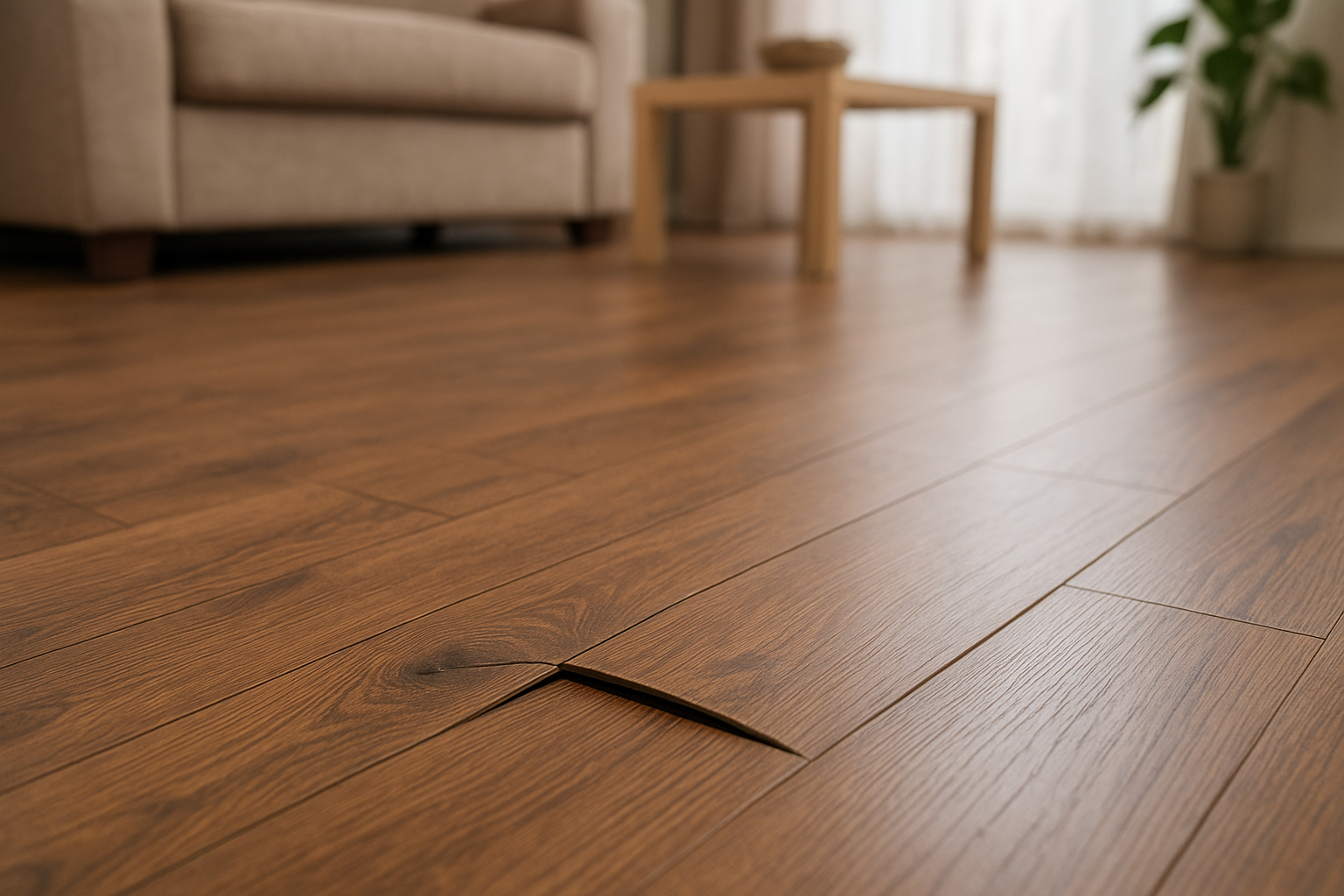If you’ve ever noticed your floor lifting at the edges or, in some cases, creaking underfoot, it’s usually not the material’s fault. Whether you’re installing LVT click flooring, laminate flooring, real wood floors, or even budget carpet, one simple mistake during installation is often to blame. Getting this detail wrong can turn a perfectly good floor into a headache months later.
Why Floors Lift or Creak
All flooring moves. Real wood floors expand and contract with changes in temperature and humidity, which is why creaks and edge lifts are common in wooden floors. Laminate flooring durability can be undermined in the same way: it’s a stable product, but if the planks are forced against walls or each other, they can lift, buckle, or make noise.
LVT gluedown and LVT click flooring are more dimensionally stable. They won’t creak like wood, but they can still lift or gap if the installation ignores subfloor prep, acclimation, or expansion space. Even budget carpet isn’t immune—if the underlay isn’t fitted properly or the carpet is stretched too tight, lumps, tension points, and uneven edges can appear.
The mechanics are simple: all flooring needs a little room to move. Without it, boards or tiles push against walls or neighboring pieces, causing stress, lifting, or in wood and laminate, creaking noises.
The One Mistake: Skipping Expansion Gaps
The main culprit behind lifting or creaking floors is ignoring expansion gaps.
Expansion gaps are small spaces left between the edge of your flooring and walls, fixed objects, or even door frames. They allow the flooring to expand naturally without creating stress. Without these gaps, wood planks buckle, laminate boards lift, and even LVT click flooring can separate at the seams or lift at the edges.
For real wood floors, expansion gaps are critical. Wood absorbs moisture from the air and can expand significantly over seasons. Without room to breathe, boards push against walls and each other, creating buckles, gaps, and creaks. Laminate flooring durability doesn’t matter if the planks are installed too tightly—movement has nowhere to go, and problems appear quickly.
Even LVT can lift if installed on a poorly prepared or wet subfloor. While it won’t creak like wood, the edges can curl if the material is stressed. And for budget carpet, skipping proper underlay or over-stretching the carpet can mimic the same issues in a softer form: uneven surfaces, tension lines, and lifting edges.
On job sites, tradesmen see this all the time. A high-quality laminate flooring job looks perfect on day one, but if expansion gaps are overlooked, planks can lift within months. A real wood floor installed without proper acclimation and spacing will start to creak and buckle. Meanwhile, LVT click flooring, when spaced correctly and installed on a flat subfloor, can last a decade or more with zero issues.
How to Avoid Lifting and Creaking Floors
The solution is simple but requires care:
-
Acclimate Materials
All flooring should sit in the room where it will be installed for at least 48 hours, longer for real wood floors. This allows the materials to adjust to room temperature and humidity, preventing unexpected expansion or contraction later.
-
Measure and Leave Expansion Gaps
Follow manufacturer guidelines. Typically, a 10–15mm gap around walls, pipes, and fixed furniture is sufficient for LVT click flooring, laminate, and real wood. These gaps are non-negotiable: even a small miscalculation can cause lifting or, in the case of wood and laminate, creaks.
-
Prepare the Subfloor
A flat, clean, and dry subfloor is essential. Uneven surfaces can exaggerate lifting or create movement in planks. LVT glue down & click requires a completely level surface to avoid curling edges, while laminate and real wood floors benefit from a smooth underlay.
-
Allow for Doorways and Fixed Fixtures
Expansion gaps shouldn’t just be at walls. Floors also need space around door frames, pillars, and other permanent fixtures. Ignoring these areas creates stress points that cause lifting, buckling, or creaks.
-
Use Proper Installation Tools
Even for DIYers, spacers, levels, and straightedges are critical. They ensure expansion gaps are uniform and planks are aligned correctly. Small mistakes here can lead to bigger problems down the line.
Real-Life Examples
On the job site, the difference is obvious. A laminate flooring job installed without proper gaps started lifting at the edges within weeks. A real wood floor installed in a damp room without acclimation started creaking across the entire length. Conversely, LVT click flooring and LVT gluedown installed with correct spacing on a level, dry subfloor stayed perfectly flat for years. Even budget carpet, stretched correctly over a quality underlay, performs far better than an over-tightened, rushed installation.
Conclusion
Whether it’s real wood floors, laminate flooring, LVT gluedown, LVT click flooring, or budget carpet, the single biggest factor in floor problems is ignoring expansion and proper installation. Leave space for the material to breathe, prepare the subfloor carefully, and follow spacing guidelines.
Do this, and your floor will stay flat, silent, and long-lasting. Get it wrong, and you’ll be listening to creaks, watching edges lift, and wishing you’d done it properly the first time.



